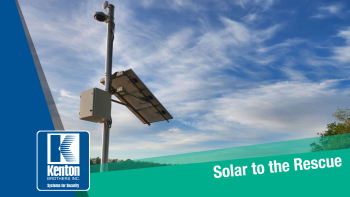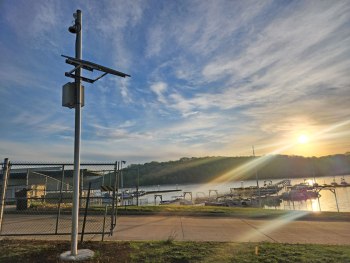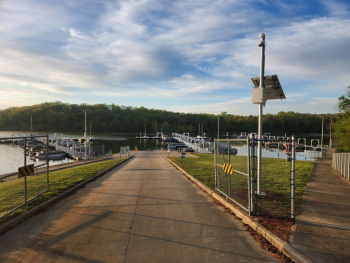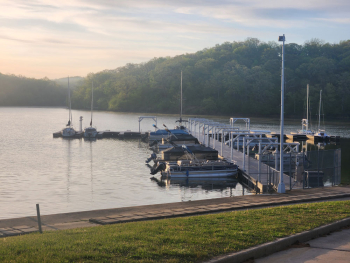Installing a camera without wires or power? Solar to the rescue.
By Neal Bellamy, IT Director at Kenton Brothers
 In a lot of ways, the requirements to install a commercial security camera are usually pretty easy to accomodate. 90% of the time we need just one wire that is smaller than your pinky finger. We can install that wire inside, outside, in conduit, or even stretch it between poles. We used to have limits on how far away a camera could be installed, but with new wire technologies and PoE extenders (Power over Ethernet), distance is rarely an issue. However, there are still times when you just can’t get a wire to where you want to install a camera.
In a lot of ways, the requirements to install a commercial security camera are usually pretty easy to accomodate. 90% of the time we need just one wire that is smaller than your pinky finger. We can install that wire inside, outside, in conduit, or even stretch it between poles. We used to have limits on how far away a camera could be installed, but with new wire technologies and PoE extenders (Power over Ethernet), distance is rarely an issue. However, there are still times when you just can’t get a wire to where you want to install a camera.
The next best option is to at least have a power source. With a constant power source, we can at least power the camera and hopefully connect it to a wireless or fiber network to get the signal back to a base station. Kenton Brothers has installed numerous cameras where the only resource we had was power. Entire city blocks are blanketed with a wireless network for this type of security situation.
But what is the solution when you have to have a camera, but don’t have power and can’t get a wire there?
Solar Power
 Solar power is not a new thing. It’s been around for decades. The hard part about solar is not the technology or the calculations, the hard part about solar is deploying it. Solar panels work by charging a bank of batteries when the sun is out and then using the batteries to power equipment when it’s dark.
Solar power is not a new thing. It’s been around for decades. The hard part about solar is not the technology or the calculations, the hard part about solar is deploying it. Solar panels work by charging a bank of batteries when the sun is out and then using the batteries to power equipment when it’s dark.
First, of course, is knowing the load that will be running on the circuit. Second, is knowing which solar zone you’re in. (This is a measurement of how much sun you can expect in the area you will be deploying solar.) Last is knowing how long you need to be able to tolerate not having any sunlight. Based on all of that information, you or your solar system provider can determine how big the solar panels will need to be and how many will be needed to support periods of time without sunlight.
Solar Kits
A solar kit comes with solar panels, a solar controller, and batteries. What isn’t commonly thought of is the size of the panels and the weight of the batteries. For a recent project at a lake, our single 300-watt panel was about 3′ by 5′. This large surface area acts like a sail in the wind . If installed on a pole (the most likely type of installation) you have to account for the wind when specifying the size and strength of the pole. Likewise, the batteries that were needed for this installation weighed almost 120 pounds!
Using solar panels on poles provides a way to install cameras where there is no wire and no power. The solar panels can support the power requirements of the camera(s) as well as communication equipment like point to point or wireless. (It would also be possible to record locally to the camera or a weather hardened server, but a bit more challenging to get to that data.)
As you can see in these project pictures, the end result is a sturdy, self contained, solar powered security camera with a wireless data connection. And it’s high enough off the ground to avoid tampering.
If you have a unique situation where you aren’t sure how to get power and connectivity to a camera, give us a call. We will have the products and techniques to solve your problem!






Leave a Reply
Want to join the discussion?Feel free to contribute!